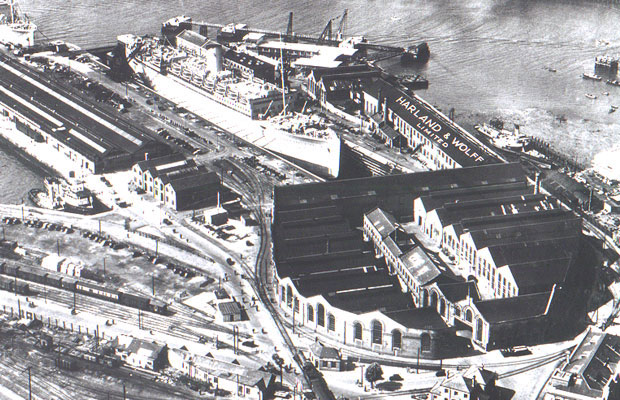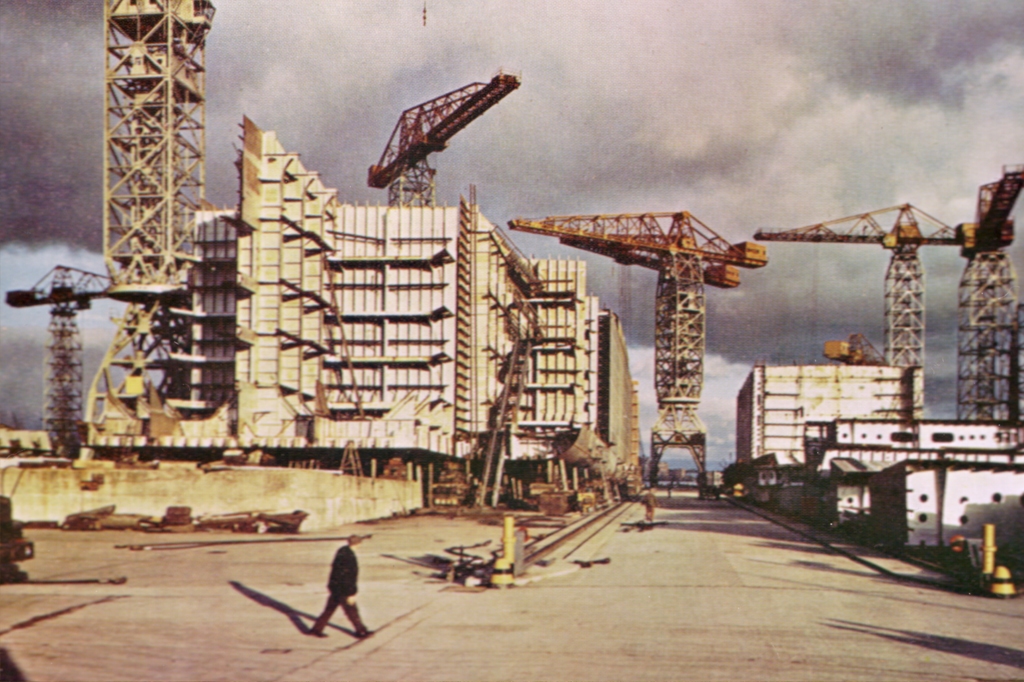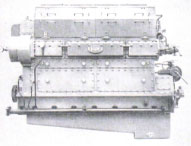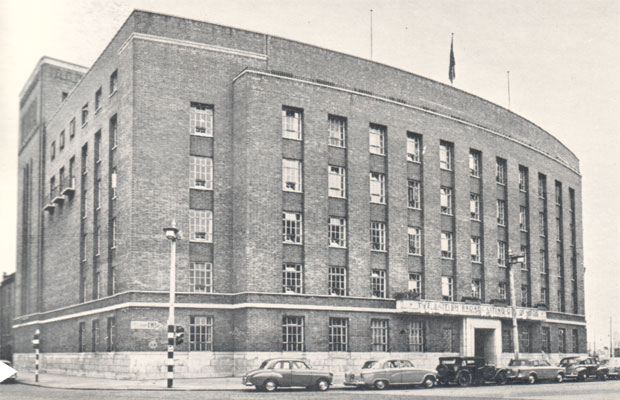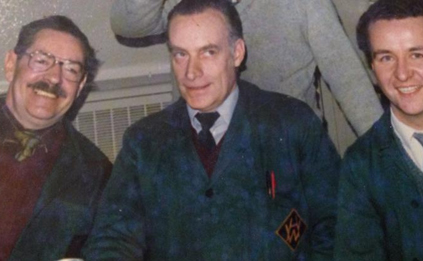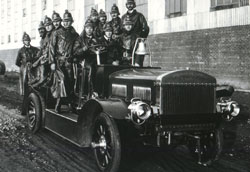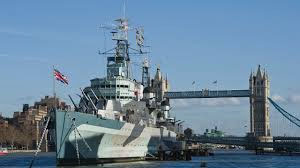On the 3rd of February last there was launched from the building-yard of Messrs. Harland and Wolff, Queen’s Island, the Britannic, the ninth steamer that has been built by this eminent firm for the now celebrated White Star fleet of Transatlantic steam ships. During the interval since that time the new vessel has been receiving her engines, rigging, and internal fittings and furnishings. A short time ago the steamer left the lough on a trial trip, and on Thursday, the 25th June, sailed from Liverpool on her first voyage to New York, accomplishing the passage in the extraordinary short time of seven days and twenty hours. Since the pioneer of the line - the Oceanic - left the Mersey in the spring of 1871, the advance of the White Star Company to an important position in the Atlantic steamship trade and a secure place in the public favour has been very rapid. This patronage is largely attributable to the superior character of the Individual ships of the fleet for speed and comfort, and the skilful manner in which they are navigated. As may be expected in these days of keen competition, the last addition to the White Star fleet is the largest in the service, and is built on the most approved principles. In common with the other steamers of the line, the Britannic has been constructed with the mot careful attention to strength and stability. Her length is 468ft and breadth of beam 45ft, with 34ft in depth of hold; while her gross tonnage is over 5000.

Compound Engines from the works of Messrs. Maudslay, Son, and Field
The engines (from the works of Messrs. Maudslay, Son, and Field) are on what is known as the double compound principle, and have a nominal horse-power of 760. Externally, the Britannic has but few features by which the vessel can be distinguished from the other steamers of the White Star fleet. Her hull is long and graceful, with two massive cream-coloured funnels, painted black at the top. There are four masts, ship rigged, which show a great spread of canvas. In addition to the ensign and the usual flags of the line, the Britannic flies a small square blue flag, which is carried by her commander, Captain Thompson, who has recently received a commission in the Naval Reserve.
Although generally the internal arrangement of the Britannic is somewhat similar to that of the Adriatic or Baltic, yet there are many novel features here, as elsewhere throughout the ship, which call for special comment. The vessel has three decks, two of which are of iron, covered with a planking of wood. The hull is divided into eight watertight compartments by bulkheads, extending from the upper deck to the keel. An iron covering—in technical phraseology, a “turtleback”—protects the vessel forward and aft. Amidships are the main saloon and the first-class state rooms. This arrangement is becoming very popular with passengers, as it is well known that a ship pitching in her sea-way has the least motion in the centre. Along the upper decks are iron houses for the officers’ and engineers’ cabins, in addition to cooking galleys, ice-houses, smoking-rooms, and other conveniences. The communication from the deck to the main saloon is by a handsome and commodious stairway. The upper portion, at the entrance, forms a large room, which is well furnished with sofas and chairs and abutting on this compartment is the smoking-room, decorated and fitted in quite a luxurious style. On the main deck is situated the grand saloon, the dimensions of which are 53ft. long by 44ft. broad. This magnificent compartment is lighted from above by a number of skylights, in addition to the ordinary ports or side lights. The upholstery is extremely beautiful, and the decorations of the most superb description. Two hundred persons can conveniently be seated in this handsome saloons and, by an ingenious arrangement, the accommodation can easily be increased. A novelty, and also a great improvement, in the saloon is a social, open english fireplace, which, in bad weather, or during the winter season, will cast a most cheerful aspect over the apartment. Most comfortable revolving arm-chairs have taken the places of the old inconvenient settees. They afford greater facilities for reaching the table, and are also much better adapted for a sure seat during boisterous weather. In addition to a fine-toned piano, there is an excellent library, containing 265 volumes of the works of the best writers in poetry, fiction, and general literature. The books are beautifully bound in the White Star style, and have been supplied by Mr Mullan, of Donegall-place, who has furnished the libraries of all the steamers of the line. Forward and aft of the saloon are the state-rooms, which are fitted with cold-water pipes and that moat useful contrivance, electric bells. The state-rooms are generally constructed for two passengers, and this arrangement gives more space than is generally allowed in ocean steamers. Several of them are fitted with berths, so as to avoid the pitching and rolling motion of the vessel, thereby obviating much of the unpleasantness inseparable from a “rough night.” Forward of the saloon, on the starboard aide, is a great novelty in state-rooms called a dormitory—the first, we believe, that has been introduced into a steamship. This compartment is designed for a party of ladies or gentlemen, and will accommodate twenty-two persons. It is handsomely fitted np, and looks roomy and comfortable. Tie sleeping berths are arranged in such a fashion that an occupant can with case hold a vis a vis conversation with nearly all his companions. An apartment like this is sure to be highly appreciated by large parties and groups of delegates, to whom it will prove a most sociable boon. Nearly abutting on the grand saloon, forward on either side, are “bridal berths,” another novelty in steamship construction. They are luxuriously furnished, and provided with every requisite that can possibly add to the pleasure of a “honey moon trip.” Every portion of the vessel is thoroughly ventilated, and hot or cold air can be driven at pleasure to all the state-rooms by means of a large fan worked by steam. Under the state rooms, and communicating with them by a staircase, are the bathrooms, barber’s shop, servants’ apartment, storerooms, wine cellar, bag- gage compartment, mailroom, and iron specie-room. The promenade deck for first-class passengers is 16ft long by 40f t. wide. It is situated on the top of the middledeckhouse, and has on it a light and capacious room for ladies, with whom this new feature will undoubtedly prove very popular. The culinary arrangements are most complete, separate galleys being provided for cabin and steer- age passengers, and everything is on the most extensive and approved style. Particular attention has been paid to sanitary matters, and all that was possible has been done for the comfort and convenience of both saloon and steerage passengers. The officers' quarters are also very comfortably furnished, being replete with almost every luxury that can be found in the best modern dwelling-houses. Throughout the vessel the same signs of profuse liberality in making provision for the comfort of those on board are everywhere apparent. While every inch of space has been admirably economised, no convenience has been sacrificed to the desire to make the most of the carrying capacity of the hold, and the result is a steamship which cannot be surpassed for elegance and beauty of design in the Atlantic service.
The size and beauty of the Britannic, however, are not her sole features of interest as a screw steamer. While safety and comfort have never for a moment been lost sight of, the attainment of an accelerated rate of speed has been aimed at, and towards this end, a screw-lowering apparatus, the invention of Mr. E. J. Harland, has been afixed to the propeller, by which it can be raised or lowered at pleasure. But few indeed have crossed the North Atlantic Ocean when so smooth as not to have experienced the moat dis agreeable effects from the propeller at one moment whizzing round high out of the water, technically called “racing,” and at the next moment sluggishly buried deep under, as the stern of the vessel alternately rises and falls amidst the waves, thus producing a most irregular action of the propeller, whilst increasing the disagreeable motions inseparable more or less from a vessel, and preventing the full and steady application of the engine power, with consequent loss of speed. To obviate all this, the propeller in the Britannic is so fitted that when leaving port, or while yet in shallow water, it is immersed to only the ordinary depth; but immediately the steamer gets into sufficiently deep water it is lowered some nine or ten feet further under the surface. This is but the work of some two or three minutes, and can be accomplished without stopping or slowing the engines. With the propeller thus submerged, the constant and full power of the engines can be applied in driving the vessel steadily onward through two heaviest sea. If we mistake not, the Camel s.s., which was built, and is still owned and sailed, by Messrs. Harland and Wolff, has been running most successfully for the last four years with the propeller fitted in this way; and after the splendid maiden trip just accomplished by the Britannic to New York, in the almost unprecedented time of four hours under eight days, we shall be greatly disappointed if she does not display in her future career a higher and more uniform speed than any of her rivals. – The Northern Wig |
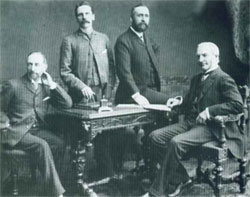 The PartnersHarland, Wolff, Pirrie and Wilson
The PartnersHarland, Wolff, Pirrie and Wilson
 The HatsChairmen, MD's, CEO's
The HatsChairmen, MD's, CEO's
 Sir Frederick RebbeckChairman 1930-41 1944-62
Sir Frederick RebbeckChairman 1930-41 1944-62
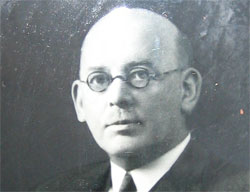 Sir Charles PalmourChairman 1941-1944
Sir Charles PalmourChairman 1941-1944
 John S BallieChairman 1962-1965
John S BallieChairman 1962-1965
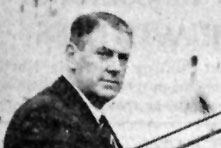 Dr Dennis RebbeckChairman 1965-1966
Dr Dennis RebbeckChairman 1965-1966
 Sir John MallabarChairman 1966-1970
Sir John MallabarChairman 1966-1970
 Joe R EdwardsChairman 1970
Joe R EdwardsChairman 1970
 Alan WattActing Chairman 1970-1971
Alan WattActing Chairman 1970-1971
 Lord RochdaleChairman 1971- 1975
Lord RochdaleChairman 1971- 1975
 Sir Brian MortonChairman 1975-1980
Sir Brian MortonChairman 1975-1980
 Victor Alexander CookeChairman 1980-1981)
Victor Alexander CookeChairman 1980-1981)
 Vivian WadsworthChairman 1981-1982
Vivian WadsworthChairman 1981-1982
 Sir John ParkerChairman 1982-1992
Sir John ParkerChairman 1982-1992
 Islandmen(and Women)
Islandmen(and Women)
 Save our ShipyardSupport and solidarity
Save our ShipyardSupport and solidarity
 The War MemorialsWe Will Remember Them
The War MemorialsWe Will Remember Them
 The Bible Class
The Bible Class
 Nicknames
Nicknames
 The Yarns(and Tall Tales)
The Yarns(and Tall Tales)
 The Shipyard IndentureJW Mullholland
The Shipyard IndentureJW Mullholland














